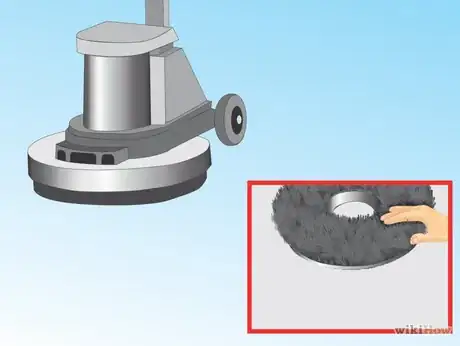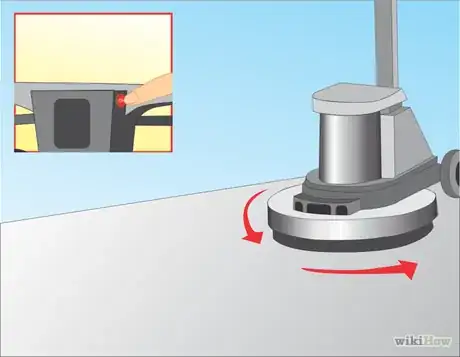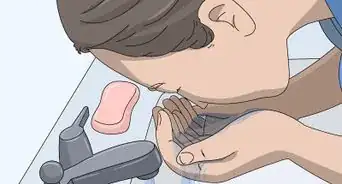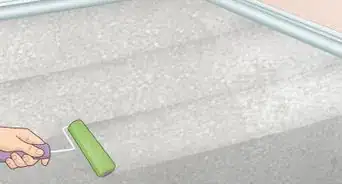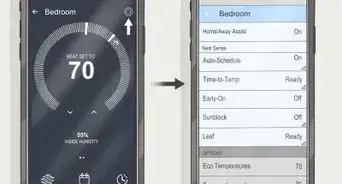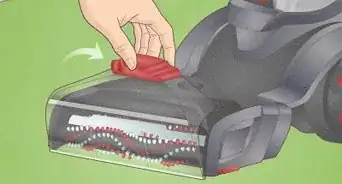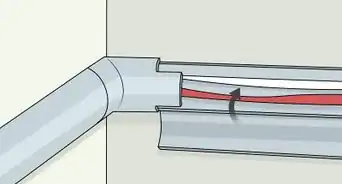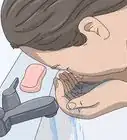wikiHow is a “wiki,” similar to Wikipedia, which means that many of our articles are co-written by multiple authors. To create this article, volunteer authors worked to edit and improve it over time.
This article has been viewed 126,142 times.
Learn more...
Floor buffers are an upright electrical cleaning device similar to vacuum cleaners in size and shape. They are used to both clean and shine non-carpeted flooring. High-speed floor buffers are typically used in hospitals, schools and businesses because they can quickly and effectively clean and polish large expanses of floor. High-speed buffers are able to polish so well due to pads that can rotate as much as 2000 revolutions per minute. The high speeds create heat, which aids in creating a bright shine. Floor buffers, especially heavy high-speed buffers, can be difficult to operate. Use these steps for using a high-speed buffer.
Steps
-
1Clear the floor of furniture and other objects.
- Place chairs on top of tables and move them to the edges of the room. If possible, move everything out of the room into a hallway or another room. Buffers can clean spills and remove some dirt, but large pieces of debris should be picked up before buffing.
-
2Examine your scrub brush or polishing pad for cleanliness.
- Replace a buffer pad that appears used or soiled. Using a dirty buffer pad can scratch the floor, especially at such high speeds.[1]
- Check for defects in the pad such as missing portions of pad fabric or unevenness.
Advertisement -
3Move to a back corner of the room to begin.[2]
- Locate the farthest corner from the entrance of the room you are buffing in order to prevent stepping on the freshly buffed floor as you work. Walking over a floor that has just been buffed might scuff or dent the surface.
- Make sure there is a close electric outlet and that your high-speed floor buffer cord is long enough to span the entire room. If it's not, plan your buffing route around the location of the other outlets to prevent having to walk over a buffed portion of floor.
-
4Apply buffing solution or polishing cream on the pad or directly on the floor.
-
5Turn the buffer on.[3]
- Locate the "on" switch. This button is usually positioned with other control buttons on the arm of the appliance. Consult the owner's manual if you cannot find the controls.
- Choose an appropriate setting for the type of floor and type of dirt. Some high-speed floor buffers have multiple settings that allow you to select different rpms.
-
6Proceed slowly in a back and forth pattern across the room.[4]
- Move laterally throughout the room starting from the right. Work very slowly and carefully. Change up your direction and begin working from left to right to guarantee even buffing.
- Overlap about 1/3 of each row as you continue to buffer. This ensures you don't miss a spot.
-
7Examine the pad 1 to 2 times during the process of buffing.
- Check for rips, large pieces of debris or an excessively grimy pad. Replace the pad as needed.
Community Q&A
-
QuestionWhat are the uses of a floor buffer?
 Community AnswerIts use is to clean and polish hard floor surfaces.
Community AnswerIts use is to clean and polish hard floor surfaces. -
QuestionHow often does the high speed buffer need to be serviced?
 Community AnswerEvery 3 to 6 months; otherwise, every time it has mechanical issues. If it constantly needs to be repaired, you probably need to get a new one.
Community AnswerEvery 3 to 6 months; otherwise, every time it has mechanical issues. If it constantly needs to be repaired, you probably need to get a new one. -
QuestionAre there time limitations when using a high-speed buffer?
 Community AnswerIt depends on the size of your space, the power of the buffer (battery vs. electric) and the brand of the buffer.
Community AnswerIt depends on the size of your space, the power of the buffer (battery vs. electric) and the brand of the buffer.
Warnings
- Do not linger in one area for more than 2 seconds. This will cause you to apply too much cleaner or polish in 1 area, which can result in an uneven floor.⧼thumbs_response⧽
Things You'll Need
- High speed floor buffer
- Buffing solution
- Polishing cream
- Buffer pads

